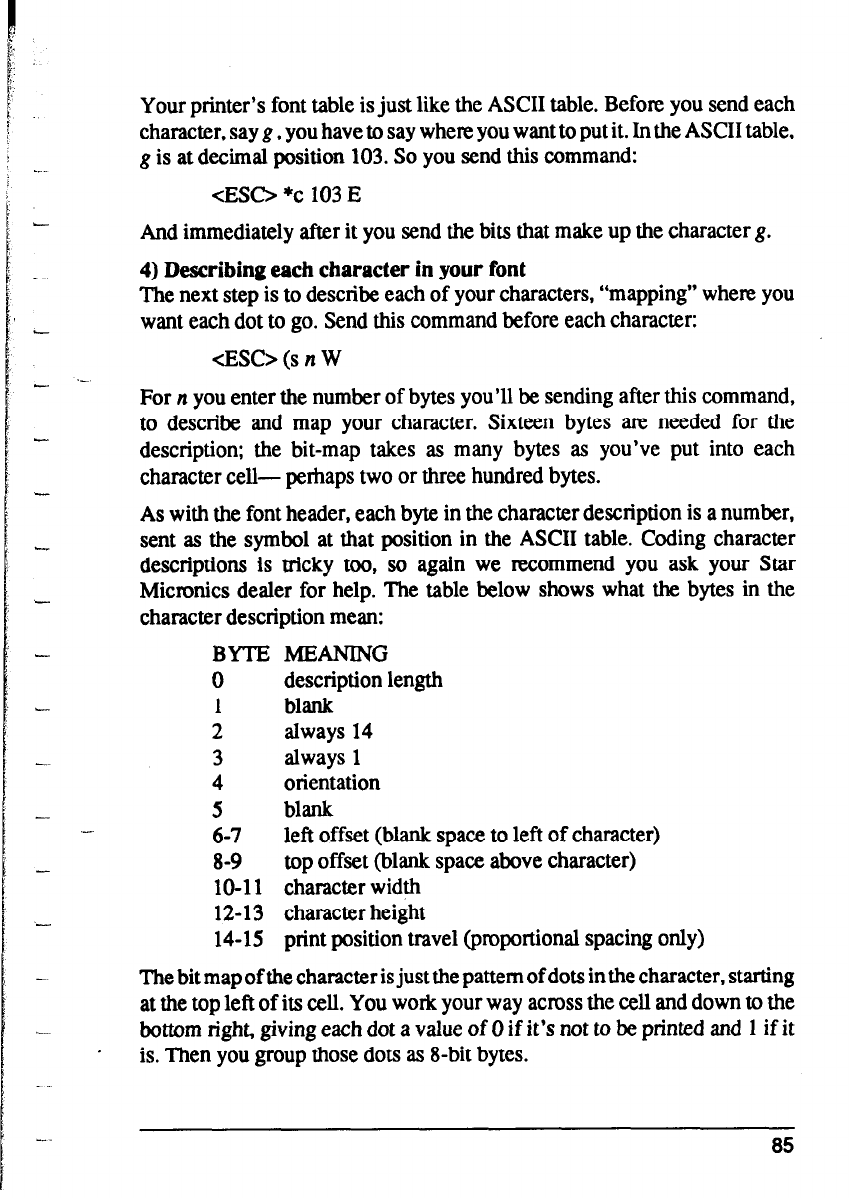
__
Your printer’s font table is just like the ASCII table. Before you send each
character, say g , you have to say where you want to put it. In the ASCII table,
g is at decimal position 103. So you send this command:
<ES0 *c 103 E
And immediately after it you send the bits that make up the character g.
-
4) Describing each character in your font
The next step is to describe each of your characters, “mapping” where you
want each dot to go. Send this command before each character:
<Esc> (s n w
- .-
For n you enter the number of bytes you’ll be sending after this command,
to describe and map your character. Sixteen bytes am needed for the
description; the bit-map takes as many bytes as you’ve put into each
character cell- perhaps two or three hundred bytes.
As with the font header, each byte in the character description is a number,
sent as the symbol at that position in the ASCII table. Coding character
descriptions is tricky too, so again we recommend you ask your Star
Micronics dealer for help. The table below shows what the bytes in the
character description mean:
BYTE MEANING
0
description length
1
blank
2 always 14
-“~ 3
always 1
4 orientation
--
5
blank
.-
6-7
left offset (blank space to left of character)
8-9
-
top offset (blank space above character)
10-l 1 character width
12- 13
-
character height
14-15 print position travel (proportional spacing only)
The bit map of the character is just the pattern of dots in the character, starting
at the top left of its cell. You work your way across the cell and down to the
--
bottom right, giving each dot a value of 0 if it’s not to be printed and 1 if it
is. Then you group those dots as 8-bit bytes.
-.
85


















